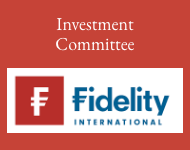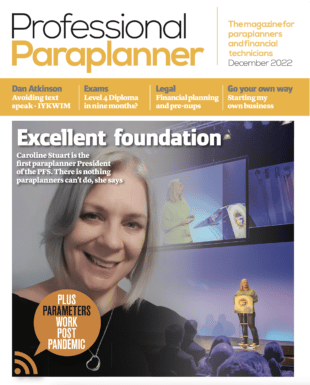In this FundCalibre interview, Nish Patel, manager of the Global Smaller Companies Trust, Columbia Threadneedle Investments, shares insights into current valuations, the impact of recent interest rate cuts, and how M&A and share buybacks are shaping the small-cap space. Nish shares how his focus on quality businesses with sustainable competitive advantages can offer both growth and reduced risk. He also discusses portfolio changes, including leveraging in-house expertise and reducing holdings to focus on high-conviction ideas.
Why you should listen to the interview: Curious about where global smaller companies stand today and how they could fit into your investment portfolio? This episode is for you. Discover why small-caps are undervalued, how they benefit from interest rate cuts, and why they may outperform larger companies in the coming years.
This interview was recorded on 2 December 2024. Please note, answers are edited and condensed for clarity. To gain a fuller understanding and clearer context, please listen to the full interview.
Interview highlights:
Ripe for a sustained recovery
“So we’ve certainly had the interest rate cuts. We’ve had that in the US, in the UK and in Europe. So that’s helpful because a lot of smaller companies have floating rate debt. So they are bigger beneficiaries of interest rate cuts and history suggests that in the first 12 months of after the first rate cuts, small-caps do outperform mid-caps and large-caps.
“M&A activity has picked up within small caps, particularly in the UK market. We are seeing share repurchase activity as well within smaller companies, which is helpful in terms of driving the share prices towards intrinsic values and the growth outlook for the really large companies. We still do think that that will be perhaps a little bit more challenging than what the market thinks, just because many of these companies are now really big companies and for them to continue to grow at the same rate that they have been growing will just prove a little bit more challenging. And many of these companies will start to see some bottlenecks.
“We are starting to see signs of life but it won’t be a straight line upwards. But I think that after a long period of underperformance the background and the environment is there for a sustained recovery. And that’s something that we’re really excited about and this trust is a good way to play that long term small-cap recovery across the world.”
A margin of safety and lower risk
“We define risk as the possibility of permanent capital loss. And smaller companies, by their very nature, are riskier investments because many of these companies have less developed business models. The management teams aren’t as experienced, and many of the companies that operate in the small-cap landscape have disadvantages versus larger peers because they just don’t have scale and scale is very important in many industries.
“So we try and manage this smaller cap company specific risk by focusing on the higher quality businesses that are in the small-cap universe. And those are the types of businesses, these high quality ones, that can withstand these issues better than others. And we also look to buy into these companies when they’re at a significant discount than what they are intrinsically were. So we look for a margin of safety. So if our analysis is wrong, then we do have a cushion that protects us on the downside, and that helps us to avoid permanent loss.”
More resource for less cost
“This trust was previously managed by BMO Global Asset Management and the European business of BMO Global Asset Management was acquired by Columbia Threadneedle. Now that deal closed in November of 2021, but we only really co-located together last year. And Columbia Threadneedle is a really well resourced company. It is very focused on investment research, and they had a really good Japanese equities team with a very strong long-term track record. Now, previously, in the BMO days, we used to outsource our exposure to Japan’s small caps by using third party funds. Now with this acquisition, we actually access the internal Japanese equities team at Columbia Threadneedle. So they’re now actually running the Japan part of this trust. And we think that’s sensible because not only do they have a really good track record but also it lowers costs for our clients. So we thought that this was a pragmatic and very sensible thing to do.
“Now for the emerging markets segment of the trust we are now getting some help from the multi-manager teams at Columbia Threadneedle in picking third party funds. This is the only area of this trust where we are using third party funds. Emerging markets are about 14% of the overall trust. So again, we are trying to make use of all the wider capabilities within Columbia Threadneedle. And that’s an ongoing program.”
Smaller company commodities?
“So we have taken a lower risk approach to investing in commodity businesses and a higher quality approach in the sense that many commodity businesses do suffer from many quality related issues, ie capital intensity. And it is hard to differentiate yourself.
“Vitesse Energy is an owner of working interests in oil and gas wells, predominantly in the Williston Basin in the US, and we’ve invested in this company. The attractions of this particular model are that the company doesn’t actually engage in any oil and gas exploration themselves. They don’t have that risk, but instead they collect payments from their partners as they produce in the various oil and gas wells that they have an interest in.
“So what that does is it makes Vitesse a highly cash generative business that also has leverage to the oil price. And we were able to buy the shares at a low valuation because it was a very unknown business that was spun out from Jefferies Financial Group. And that meant that because of it wasn’t very well known and it was a spin out that the shares were attractively valued and we took that opportunity.”
Conclusion: It’s clear that global smaller companies offer a compelling opportunity for investors willing to look beyond the headlines. With valuations still at attractive levels and catalysts like interest rate cuts and M&A gaining momentum, this asset class could be on the brink of a long-term recovery.
































